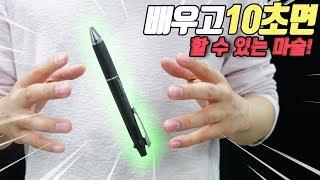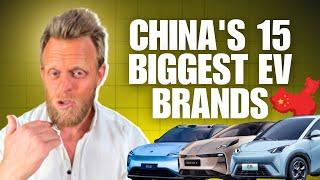
CATL’s New Sodium/LFP Hybrid Battery solves the 2 biggest PHEV problems
Комментарии:

Thanks for the heads up, Sam, but I think you should explain C ratings better. Some people still don't understand that charging power needs to be seen in relation to battery size. Saying that a certain chemistry can take 600 kW makes no sense unless you specify battery size. Applying 150 kW to a 15 kWh PHEV battery is just as brutal as charging a 100 kWh EV at one megawatt; both will be 10 C.
Ответить
So why don't EV companies compartmentalise their batteries so they are smaller, easier to charge but your car has 2 or 3 separate ones. And you can switch between?
Ответить
Informative and entertaining.
Ответить
Love the content. 100% but please not Jeely. It's a G Geely.
Ответить
Please discuss ecatthenewfire
Ответить
They should pass a law making it clear that a person or entity that deliberately publishes false information be charged as a terrorist. That would solve fake news very very quickly.
Ответить
150Kw?
My electric unicycle charges at 700W. I cannot get the charging station guys interested in providing a GPO for us.
What is the electrical environment like in an EV? Clif High says it is as savage as the inside of a micro-wave oven. What are the health consequences? Has anyone taken a frequency meter into the cab of their EV? Perhaps even a full spectrum analysis?
There is no point asking technicians about the health effect of EMF on the biological cell, they wouldn't have a clue.
I'll ask Claude to peruse the internet for me.

G'Day Sam. You should stop laughing at other web sites when you are making a HUGE error yourself. CATL batteries are highly unlikely to use SODIUM, which is a METAL that is highly explosive when it comes into contact with water. CATL probably mean SODIUM CHLORIDE (table salt) instead. A subtle difference in wording, but a HUGE difference in chemistry.
Ответить
The faster the charge the higher the current from the grid x by the number of charges in use. The grid cannot provide it
Ответить
4C means the battery can be charged in 15 minutes, theoretically if the onboard charger and fast charger support it
Ответить
Would be great to hear your latest thoughts on Quantumscape news yesterday of progress with shipping B samples.
Ответить
@Viking Not sure if I'm the only one but I keep on hearing you banging on your desk - I hear many strong "THUMP!" sounds as you bring down your hands. Do you think you could filter it out? It's annoying AF ... I'm using Sennheiser HD 4.40BTs and they are "calling it the way it is". Perhaps attach your mic to something else?
Ответить
Here in Thailand it gets HOT 40c at times , ALL batteries have hot temp probs .
Ответить
I just retired in Thailand where BYD have just opened a new factory. I took a look at the Sealion hybrid which looks like anyother SUV and it feels good to drive but I guess I should do a little more research on battery types and their pros and cons. The thing is, i'm a carpenter not an electronics engineer. 🤫😂
Ответить
I am sorry, but in America, Toyota uses both NMH and lithium batteries in their hybrid cars, like the Prius. Just Google it.
Ответить
Thanks for setting the record straight, Sam. And I'll never buy a Toyota.
Ответить
No point in getting excited about this battery. Within a month, the Electric Viking will announce a better one.
Seriously, how about reviewing all the “breakthroughs” you’ve covered, and projecting which one will make a market impact.

Sam, surely DC charging speeds for a plug-in hybrid are irrelevant. The whole point of the plug-in hybrid is to use petrol/diesel on road trips.
Ответить
PHEVs are just a car with an ICE engine and complications.
Ответить
We have had a Toyota Rav 4 Prime 2023 model for 1.5 years, getting 50 miles if Im really easy on it of just electric range (18KW and avg is 3.1 miles per... It has a LiOn battery and takes longer than advertised to charge but has been a good car. I gotta say I would love in a few years to be able to swap out the batt and charging HW for a 3x or 5x of range version (once energy density is high enough to allow it to fix in the same space etc.) that can charge on DC (Rav4 can't) and much faster charge speeds. DO you think this would ever be possible inexpensively?!
Ответить
Toyota and Subaru, get these into your cars asap. 😅
Ответить
So the bottom line is you can go further in less time when it’s cold.
Ответить
Toyota PHEV’s don’t use NiMH. Only the regular hybrids.
Ответить
Car Expert are not Battery smart are anti EV.
Ответить
I drove a friend's Toyota RAV 4 hybrid 2022 for a month (back in 2022). They were in short supply and highly sort after (to the degree where after 12 months on the road it was sold for the same price it was bought for new... by a car auction company!)
My experience? Did not like it at all, had and caused a lot of problems, and definitely not economical. Not even close to being worth the money.

Just think of the benefits... You still have to put gas in it... and it probably still catches fire if it gets in a crash... We're right on it here at industrial revolution Central.
Ответить
… low on technical details :-(
Ответить
Must admit, I never charge my PHEV other than at home or friends/family if we go away and stay over.
The newer PHEVs with 20kw batteries, yes, but these are only just coming out.
Unless that's the intended market? But bear in mind charging needs to be cheap otherwise it''s better to just use petrol.

You get to drag around a petrol motor and fuel with a tiny slow charging EV battery and then bonus, carry that wee battery and electric motors with the petrol engine. Sounds great. You also get to maintain the petrol engine AND replace the sub par small battery. Where do I sign?
Ответить
I’ve heard that catl have been closing factories
Ответить
Why do you look like your stoned all the time
Ответить
EV....are P.O.S.......
Crap..
Junk
Garbage
Trash
Not for me
Just for people with cognitive problems

What do you guys think will be the role of Lithium based batteries in 15-30 years. You think it will completely be replaced? Or just complimented?
Ответить
Yetv another GAME CHANGER ?????
Ответить
150 kW charging will result in a wild C-factor? What will that do to lifespan?
Ответить
I would love to be able to take my 2012 Prius and change out the battery for something much longer lasting. I end up driving a lot in the city at slow driving speeds because of traffic and if I could use the battery for the majority that I'd hardly use any gas. I'm not sure how easy that is to do though
Ответить
If the Chinese Communist Party can do it, the free world can do it better.
Ответить
I highly doubt they have a fully working sodium battery. it is really hard to make it work. even if they have one, it won't last long, due to it's inherent issues.
Ответить
Great content
Ответить
While your commentary is generally insightful, your criticisms of Toyota’s continued (limited) use of NiMH batteries comes from a narrow perspective.
Toyota is in a unique position for two reasons. First, it introduced the first ICE-electric hybrid car in 1997, and continues to make the most efficient hybrid drivetrain, with a planetary gear system.
A hybrid car uses its battery to capture a limited amount of energy from regenerative braking. So, it doesn’t need a large capacity. The Gen 4 Prius hybrid has a 1.3 kWH NiMH battery weighing 85 lbs. In a 3,500 lb vehicle, reducing the battery weight by 50 lbs going to a Lithium battery is not economically compelling.
Toyota has a very cleverly nuanced battery strategy. Its Gen 4 Plugin-Prius is essentially the same as the Gen 4 Hybrid Prius. The key difference is the 85 lb m, 1.3 kWH NiMH battery is replaced by a 4.4 kWH Lithium battery weighing 180 lbs. Toyota decided that the Lithium battery made more sense at the 4.4 kWH plugin hybrid requirement, while the NiMH made more sense at the smaller 1.3 kWH non-plugin hybrid requirement.
Any other car manufacturer might have chosen Lithium for both hybrid and plugin hybrid, but that leads us to Toyota’s second uniqueness.
Toyota continued to invest in NiMH battery technology long after GM stopped its investment in the late 1990s. Thus, Toyota squeezed out a lot more performance (and cost reductions) from NiMH batteries than any other car manufacturer. While early Lithium batteries were going through growing pains, Toyota’s NiMH batteries were humming along, going unnoticed because of their low cost and high reliability.
Another benefit of the maturity of NiMH batteries is they are 100% recyclable, unlike Lithium batteries.
Last, but not least, Toyota has uniquely diversified its battery supply chain. If there’s a prolonged disruption in Lithium battery supply, Toyota’s NiMH hybrids are not directly affected, and they have options that other’s don’t.
In summary, Toyota made a substantial investment in NiMH early on, and continues to benefit from it, economically, today. Even as their higher battery capacity cars have transitioned to Lithium, Toyota, unlike any other car manufacturer, is well positioned to benefit from a mix of NiMH and Lithium battery chemistries.

I love your channel Sam. All the best to you and your family. Quick fact check on this video. The 2024 plug-in hybrids from Toyota no longer use nickel metal hydride batteries. Although I don’t have the exact chemistry, they use some form of lithium ion. Adding that to this video would make it a bit more credible. Keep up the good work!
Ответить
I don't know every model, but the Mitsubishi Outlander PHEV and the Toyota RAV4 PHEV have Li-Ion batteries, not NiMH.
Ответить
Great content, as always! I need some advice: My OKX wallet holds some USDT, and I have the seed phrase. (alarm fetch churn bridge exercise tape speak race clerk couch crater letter). What's the best way to send them to Binance?
Ответить
👍👍
Ответить
A question: the magnetic field in EV automobiles bad on human tissue, great for plants. Very bad on living tissue. The EV produces a magnetic field in compartment carrier. The gas automobile only produces the Magnetic field in engine compartment. A way from people. When you drive a EV for several hours, same as living under power lines. They do not build homes near power lines. Only Parks, plant nurseries, and equipment storage.
Ответить
Phev main disadvantages are low EV range (smaller benefits in charging) and a good home charger cost a lot compared to the benefit
Ответить
Sodium Ion(SIB/NTM) battery has a thermal runaway of 511C vs 180C for LFP vs 140C for NCM.🤔
Ответить
I'll welcome anything using Sodium ion as that's the technology that will inevitably dominate grid storage and shut up the FUD about not enough Lithium. It just needs the economy of scale from cars to get going.
Ответить
Really interesting re Toyota, but what is your thoughts on non plug in Toyota hybrids?
Ответить










